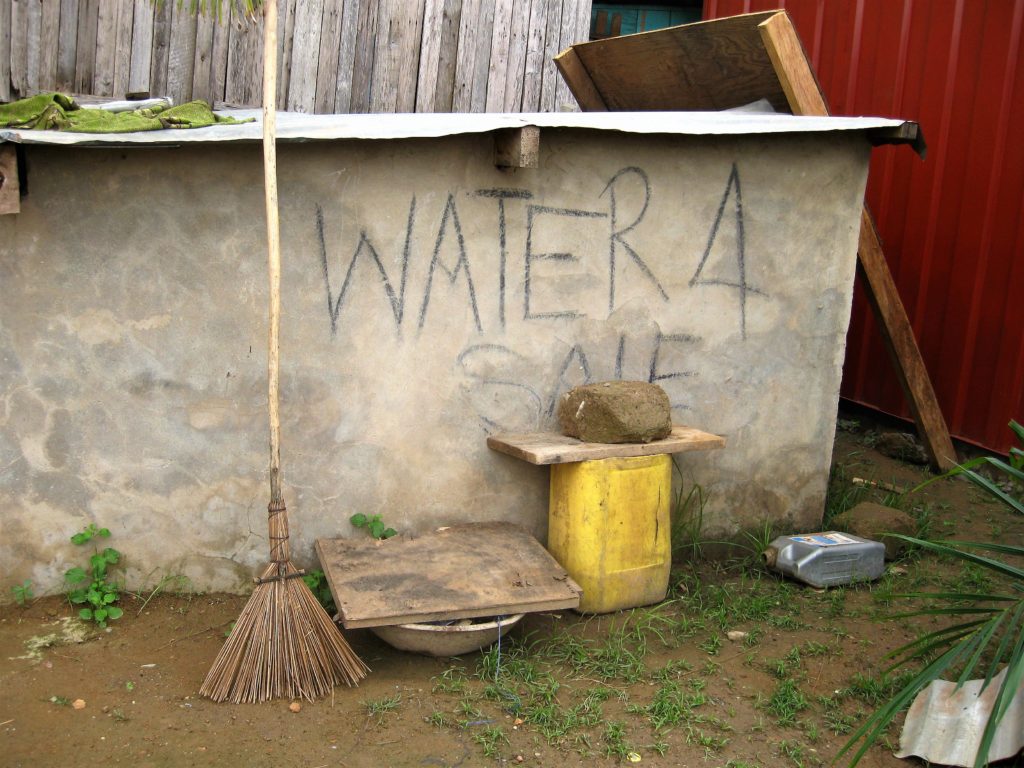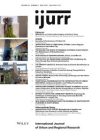In 2015, following years of drought, the governor of California declared a state of emergency, and cut water supplies by as much as by 25%. That same year, residents of Flint noticed something amiss in their water. Further investigations revealed that over six thousand residents, particularly children, had elezvated levels of lead in their blood; lead that could be traced to poorly maintained pipes of the city’s water network sourcing water from the toxic Flint river. In early 2018, the city of Cape Town announced Day Zero– a day that not if, but when Cape Town would ostensibly run out of water. Last week, the city of Newark also recognized elevated levels of lead in its water and began distributing water filters to its residents. And despite Mumbai flooding every year, every year officials relentlessly to warn of a coming water crisis, of impending and catastrophic water scarcity. As water crises become conditions of the everyday in Mumbai, in Flint, in Newark, California and Cape Town, what does it mean to live with crisis? And what does crisis talk do?
In this short essay, I make three brief points. First, that contemporary shortages of clean and sufficient urban water have less to do with the availability of water and more to do with the paradigms with which people imagine, design, distribute and use water infrastructure in everyday life. Second, that talk of the urban water crisis is not just produced by the inequality of distribution. Crisis talk produces inequality in the city. Finally, I wish to suggest that the urban water crisis demands we join studies of urban politics and bureaucracy with together with the study of technology and infrastructure. For it is through and with infrastructure that cities and citizens are made and unmade.

‘Water 4 Sale’: Private re-sale of water in Ashaiman helps to fill the need for residents without regular piped water access or lacking stored water during service interruptions, but is priced at a premium. Photo: Megan Peloso, 2012.
Thirsty Cities
Mumbai is a large burgeoning Indian city with a reported population of 12.7 million in 2016.City administrators constantly warn that the city can no longer accept new migrants to the city, for the additional pressure they will place on urban infrastructure, particularly its water supply systems. Yet, scarcity is not the purview of the 21stcentury city. Administrators have warned of the coming water scarcity for much of the city’s history. Projecting water scarcity not only is intended to have social effects; to focus citizens’ attentions on the water coming (or not coming) out of their taps, that they may be more thrifty. In Mumbai, as in Los Angeles, crisis talk also enables cities to build new water projects (read dams) and appropriate the waters from ever more distant watersheds (Reisner 1987, Anand 2017).
Today, owing to a relentless construction of dams through the city’s history, Mumbai sources over 3.4 billion liters of water a day. Accounting even for the city’s informal residents, and the water leakage figures that the city conjures, there is somewhere between 100 and 200 liters of water for each resident of the city. There is enough water entering Mumbai for all residents of the city. The water crisis has little to do with the insufficient supply of water (see also Gandy 2014, Bjorkman 2015). Yet marginalized residents continue to express difficulty receiving sufficient water of adequate quality. Their problems are a consequence of the water distribution regimes of the city water department.
As Jamie Linton (2010) has observed, it is the modern water supply paradigm that is itself in crisis. Using centralized technologies and aging pipes, the modern water supply paradigm is wasteful, aging, energy intensive and difficult to maintain. Amidst ecological uncertainties and shrinking budgets for public services (Bakker 2010), it is increasingly difficult to produce and manage prolific volumes of treated water, even for purposes for which a high level of water treatment isn’t as necessary. It may be time to return to thinking of water not as singular, but as multiple again (Hamlin 2010); differentially sourced from and distributed for diverse kinds of purposes and ends in cities.
Unequal Cities
In cities around the world, including Guayaquil, Bangalore, Jakarta and Johannesburg (Swyngedouw 2004, Ranganathan 2014, Kooy and Bakker 2008, von Schnitzler 2016, Sultana and Loftus 2013), the distribution of water resources is very unequal across social groups. Water indexes power relations. Marginalized social groups (gendered, raced, classed or caste others) often have less reliable access to water than those in more dominant positions. These inequalities are evident and often quite proximate in cities. Residents of an affluent high rise will have access to water that those living in nearby slum settlements do not, or religious others have poor access to water where those of more dominant groups in neighboring settlements do. Made visible in differential water standards, court rulings, and also installed hardware, water services are a key site in which inequalities, and their attendant crises are produced. Thus, in Flint, for instance, a series of administrative decisions, coupled with a willful ignorance produced a water crisis that disproportionately harmed racialized Black bodies (Ranganathan 2016, Anand 2017b).
Yet, it is not just that differential access to water produces water crises in marginalized households. Crisis talk also produces inequality. As Samer Alatout (2008) has shown in his work on water scarcity in Israel, crisis talk calls for a series of interventions that recapitulate unequal social processes (see also Barnes 2014). In Flint, for instance, administrators of the city switched to sourcing water from the Flint River because of what they narrated as a fiscal crisis; water from the Detroit Water and Sewerage Department was deemed to be too costly for the struggling city. The city of Detroit was described as being in crisis, and was being managed by emergency managers who focused on making the city financially solvent. Neoliberal reasoning narrated both cities as being in crisis. Focusing extensively on cost recovery, the series of decisions subsequently taken in both cities were responsible for producing mixtures of water and lead that visited unequal events of harm and suffering on racialized residents in Flint. Rendering of a city, or a resource in crisis often revisits structural violence on marginalized bodies.
Urban Materialities
Finally, it is particularly because the water crisis is performed across discursive and material worlds, that it is critical to engage studies of infrastructure to bear on theorizations of urban politics. As Antina von Schnitzler (2016) shows, apartheid regimes were brought into being through the designs, plans and administration of urban infrastructure. In Tijuana, inequalities between different classes of residents are produced by the different public infrastructures and services they are permitted and subject to (Meehan 2014). Infrastructures are key processes through which political programs and state institutions are given form and brought into being. Second, the materialities of infrastructure also limit the potentialities of different political programs. Unlike energy infrastructures, water infrastructures do not cooperate with privatization programs, Karen Bakker (2003, 2010) shows. Distributing a vital, heavy material through aging underground pipes, water infrastructures are difficult to regulate efficiently, and exclusively through paradigms of cost recovery.
As an attention to the life of infrastructures demonstrates, these are seldom just smooth, apolitical technically functioning apparatuses in cities (Furlong 2014). Infrastructures are always“splintered”, partial and serve differentiated publics (Graham and Marvin 2001, Collier et al 2015). As such, studies of infrastructure need to more carefully account for the quotidian social differences they draw on and produce while describing their crises and conditions of their emergence (Star and Ruhleder 1996). Infrastructures are built on and from crises. As ongoing assemblages of materials, imaginaries and discourses, the crisis of water infrastructures today provokes us to fundamentally reimagine how (and how to think about) the making and unmaking of urban worlds is taking place.
Nikhil Anand (University of Pennsylvania, Department of Anthropology)
All essays on Parched Cities, Parched Citizens
Introduction
Liza Weinstein
Water Crisis
Nikhil Anand
Beyond ‘Third World’ Comparisons: America’s Geography of Water, Race, and Poverty
Malini Ranganathan
Crisis Temporalities: Intersections Between Infrastructure and Inequality in the Cape Town Water Crisis
Suraya Scheba & Nate Millington
Water Scarcity Beyond Crisis: Spotlight on Accra
Megan Peloso, Cynthia Morinville & Leila M. Harris
Water Crisis and Eco-Apartheid in São Paulo: Beyond Naive Optimism About Climate-Linked Disasters
Daniel Aldana Cohen
Related IJURR articles on Parched Cities, Parched Citizens
Conduct of conduits: engineering, desire and government through the enclosure and exposure of urban water.
Usher, Mark
Urban Warfare Ecology: A Study of Water Supply in Basrah.
Zeitoun, Mark, et al.
Worlding water supply: thinking beyond the network in Jakarta.
Furlong, Kathryn, and Michelle Kooy
The political ecology of virtual water in Southern Spain.
Beltrán, Maria J., and Esther Velázquez
Debate on Karen Bakker’s Privatizing Water.
Punjabi, Bharat
Paying for pipes, claiming citizenship: Political agency and water reforms at the urban periphery.
Ranganathan, Malini
Experiments and counter‐experiments in the urban laboratory of water‐supply partnerships in India.
Gopakumar, Govind
The Changing Nature of Border, Scale and the Production of Hong Kong’s Water Supply System since 1959.
Lee, Nelson K
Atlantic gardens in Mediterranean climates: Understanding the production of suburban natures in Barcelona.
Parés, Marc, Hug March, and David Saurí
Maintaining climate change experiments: urban political ecology and the everyday reconfiguration of urban infrastructure.
Broto, Vanesa Castán, and Harriet Bulkeley
Gender water networks: femininity and masculinity in water politics in Bolivia.
Laurie, Nina
© 2018 THE AUTHOR. INTERNATIONAL JOURNAL OF URBAN AND REGIONAL RESEARCH, PUBLISHED BY JOHN WILEY & SONS LTD UNDER LICENSE BY URBAN RESEARCH PUBLICATIONS LIMITED
This is an open access article under the terms of the Creative Commons Attribution-NonCommercial-NoDerivs License, which permits use and distribution in any medium, provided the original work is properly cited, the use is non-commercial and no modifications or adaptations are made.
